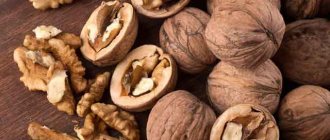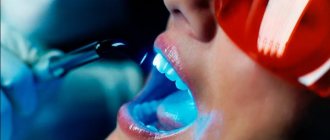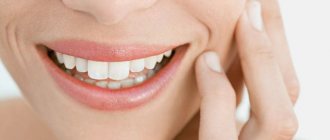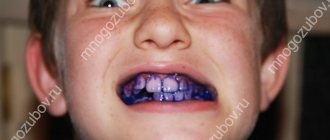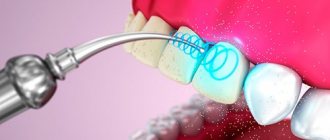According to historical data, people first began to think about ways to combat plaque on their teeth about 500 years ago. And today the problem remains relevant for the entire adult population of the planet. Let's look at what tartar is: how to get rid of it at home and prevent its reappearance in the future.
Reasons for appearance
Hardening of plaque is the result of the accumulation of food debris, mucus, pathogens and mineral salts in and under the gum pocket, in areas that are difficult to clean.
Initially, a soft plaque forms, the so-called dental plaque, which can be easily removed with a paste and a brush. This deposit consists of mucus, food debris and bacteria. Over time, mineral compounds accumulate in the mucous plaque, which leads to hardening and petrification.
Dentists identify a number of factors that provoke the appearance of hard plaque:
- use of low-quality oral hygiene products;
- lack of regular hygiene care;
- malocclusion;
- using only one side of the jaw for chewing;
- smoking;
- abuse of coffee and tea;
- eating exclusively soft foods;
- violation of metabolic processes.
It only takes 5-7 days for dental plaque to petrify, and after 2 weeks the plaque cannot be cleaned with a regular brush and paste. This confirms the importance of regular care and maintenance of oral hygiene.
Clay
To clean crowns, it is recommended to use only white clay, which, due to its abrasiveness, removes plaque well and, in addition, promotes enamel remineralization .
To cleanse, the clay is diluted with water to a uniform consistency similar to toothpaste. After this, apply 2 times a day for 1 month. This product should not be used if the enamel is thinned.
Types of Tartar
Tartar in dentistry is divided into 2 types depending on location. It can be located on the visible part of the tooth or cover an area hidden under the gum.
Subgingival deposits cannot be detected by visual examination; they are detected only by dental probing. The stones are tightly bonded to the surface of the root and are colored greenish-brown.
Supragingival stones are brown, brown or yellow, these are hard formations on the enamel that can be identified by visual inspection.
Why fight tartar?
Removing tartar is one of the important hygienic procedures. If nothing is done when fossilized deposits are identified, the following complications may develop:
- caries;
- periodontitis;
- inflammatory processes;
- bleeding gums;
- deepening of the gum pocket;
- tooth loss.
In addition, the problem causes discomfort to a person - it destroys aesthetic qualities, manifests itself in itching and an unpleasant odor.
Symptoms signaling the formation of hard deposits
There are certain signs that indicate the beginning of the formation of tartar. It is important to know these symptoms so that you can recognize the problem in time and seek appropriate help. Here are the main ones:
- dark pigmented areas that first appear on the inside of the row, but gradually move to the front side,
- bad breath,
- redness or even blueness of the gums,
- the appearance of bleeding, especially during cleaning,
- inflammation of the mucous membrane, itching and soreness - in advanced cases, in the presence of subgingival deposits.
Bad breath may indicate a problem.
First, the stone forms at the neck of the tooth, surrounding it with a dark rim. Gradually it spreads into the subgingival area and covers an increasingly larger area of the coronal part.
Methods for removing tartar at home
Despite the fact that professional dental techniques allow you to painlessly remove plaque and fossilized deposits, many still prefer to deal with them on their own. How to remove tartar at home and how effective is it? Below is a detailed breakdown of popular home methods and how they rate their effectiveness.
Whitening paste
Professional whitening toothpaste and a properly selected hard brush, when used regularly, will help reduce the area of fossilized deposits, cope with soft plaque and improve the aesthetic qualities of teeth. When choosing a paste, you need to pay attention to the presence of abrasive particles - they are the ones that ensure cleaning from plaque.
How to remove tartar at home using toothpaste that provides an abrasive effect? Use it regularly to ensure daily hygiene care, in accordance with the basic rules and the attached instructions.
Professional whitening pastes have a side effect - they can accelerate the destruction of enamel if it has cracks, chips and other damage.
Stripes
Whitening strips are a popular skin care product. Their advantages are affordable price, ease of use and quick results.
However, it is not always possible to remove tartar at home with whitening strips. If deposits are located in hard-to-reach places, outside the zone of contact with the impregnated strip, there will be no effect.
Irrigator
An oral irrigator is a professional device for effective hygiene that can be used independently.
The principle of operation of the device is as follows: air and water are supplied from a special nozzle under high pressure for mechanical cleaning, and ultraviolet rays destroy bacteria.
You can get rid of tartar at home with regular use. The device is absolutely safe, can be used to care for sensitive teeth, and can be used in cases of damaged enamel, fillings and dentures. An additional advantage is that the irrigator massages the gums, prevents bleeding and protects against inflammation.
Ultrasonic brush
An ultrasonic toothbrush is a home electric device for oral hygiene. The bristles perform mechanical cleaning, and the element located under it acts with ultrasound in the range of 1-3 MHz, neutralizing bacteria and destroying the structure of deposits.
How to remove tartar at home with an ultrasonic brush? Apply regularly, intensively affecting problem areas of the tooth. The advantage of the device is its ease of use and the absence of contraindications. Ultrasound has been used for half a century in various fields of medicine, and its safety has been proven by science.
Salt
Removing stones with salt is considered one of the most effective and simplest methods. To do this, you just need to wet the brush, dip it in table salt and clean the crowns for 2 minutes. For the procedure, it is best to use fine salt , since coarse salt can damage the enamel.
Removing stones using this method requires a course of treatment. First, the product is used daily for 14 days. Then the number of procedures is halved, using salt every other day. In the fourth week and beyond, cleaning is done all 2 times.
Folk remedies
Home remedies for removing plaque from teeth are effective in the long term, but they are not always safe. However, using some alternative methods, you can eliminate soft plaque, slightly whiten tooth enamel and reduce the area of deposits . How to get rid of tartar at home? Let's consider alternative methods.
Soda
The use of soda to remove fossilized deposits is justified by the abrasive effect it produces. But baking soda particles are too large and can injure the gums, so you need to use it carefully, avoiding contact with soft tissue.
Brushing your teeth with baking soda is done with a stiff brush, pre-moistened with warm water. You can mix baking soda and paste in equal parts. Abrasive particles gradually destroy plaque, but can also damage enamel if used frequently.
Hydrogen peroxide
Hydrogen peroxide is used industrially as an ingredient to make dental rinses effective. A popular folk remedy for tartar also involves the inclusion of hydrogen peroxide.
To prepare, you need a pinch of soda, 10 drops of three percent hydrogen peroxide and the same amount of fresh juice squeezed from lemon. The ingredients must be mixed and rubbed with a brush into the areas of the teeth affected by the stone, after 15 minutes, rinse your mouth thoroughly.
Cosmetic clay
It is better to use white clay in dental care. You can perform preventive cleaning 2 times a week, using clay as a tooth powder. For a pronounced effect, a mixture of water and clay is applied as a mask and washed off after 20 minutes with a brush and warm water.
Walnut
The folk method of removing tartar at home using a decoction of nut shells and partitions is safe for health. A decoction of 40 grams of crushed raw materials and a glass of water is prepared; the product should be boiled for 10-15 minutes and used as a mouthwash before brushing your teeth.
The raw material contains carboxylic acids that soften plaque and stone deposits.
Wood ash
Wood ash affects the pH of the oral cavity, has an abrasive effect, and contains potassium sulfate, calcium carbonate and several magnesium salts. How to remove tartar with wood ash at home? Crushed ash was used in ancient times for various purposes. It was rubbed on the affected surface or used as tooth powder.
A popular myth is that ash removes tartar due to its potassium hydroxide content, but this is not true . Potassium hydroxide is a caustic alkaline compound that, if it comes into contact with the skin and mucous membranes, causes chemical burns and tissue necrosis. This compound is not detected by chemical analysis of the components of wood ash.
Lemon with radish
The recipe involves grating lemon and radish, mixing these ingredients and thoroughly chewing, followed by intensive mechanical cleaning with a stiff brush. This is one of the most gentle and safe folk methods, without traumatic effects or harm to health.
The effect is due to the presence of organic acids in these fruits, which react with calcium salts that form the basis of the stone. A similar result can be obtained from other foods containing acids. For example, grapes, apples, kefir, tomatoes, strawberries .
Attention! Folk remedies for tartar do not replace a visit to the dentist and basic hygiene procedures.
It is recommended to use them between professional cleanings to maintain results.
Honey decoction
A decoction prepared with honey is not very effective, so to get a positive result, it must be used for several months. Its preparation does not require any skills: you need to dissolve 1 large spoon of honey in a glass of water.
The resulting solution is used as a rinse once a day . It is not recommended to use the product before bedtime. Also, it is worth considering that this method is not suitable for people with highly sensitive crowns.
Precautionary measures
When using unconventional methods, you must first of all remember safety. What precautions you need to know and how to remove tartar at home without damaging the enamel.
Caution should be exercised when using household acid-containing products . Concentrated acids are quite capable of breaking down plaque, but they also damage the surface of the tooth.
Folk remedies for tartar may contain components that cause an allergic reaction, so before use you need to make sure they are safe.
Any discomfort, pain, burning, bleeding or other undesirable reactions is a reason to urgently stop all manipulations and make an appointment with a dentist.
Products with abrasive particles give good results, but you should not make multiple attempts to use them to achieve an ideal result. If used incorrectly, abrasives can cause inflammation of the gums and provoke the development of wedge-shaped defects and caries.
Prevention
To prevent calcification of dental plaque, it is important to follow preventive recommendations:
- Use a full arsenal of hygiene products for care - threads, antibacterial rinsing solutions, properly selected brushes and pastes.
- Visit your dentist for regular checkups every 6 months.
- Eat raw vegetables and fruits.
- Get rid of nicotine addiction.
- Do not abuse foods rich in sugar and food dyes.
The most effective way to solve the problem of tartar is with professional hardware cleaning performed by a dentist. The procedure should not be postponed until later, because the presence of deposits can lead to a number of negative consequences not only for dental health, but also for the digestive system.
Symptoms of the disease
You can suspect that you have tartar without the help of a doctor. It is enough to go to the mirror and examine the oral cavity and interdental space under the lighting. Most often, a yellow, white, or brown coating forms there. The method helps to detect an unpleasant defect on the front teeth.
Trouble is accompanied by the following signs:
- bleeding gums (periodontitis);
- the appearance of a musty smell from the mouth.
These signs indicate an urgent need to get rid of the unsightly plaque.

